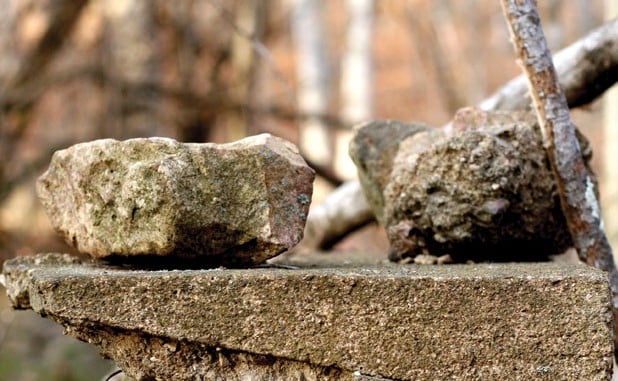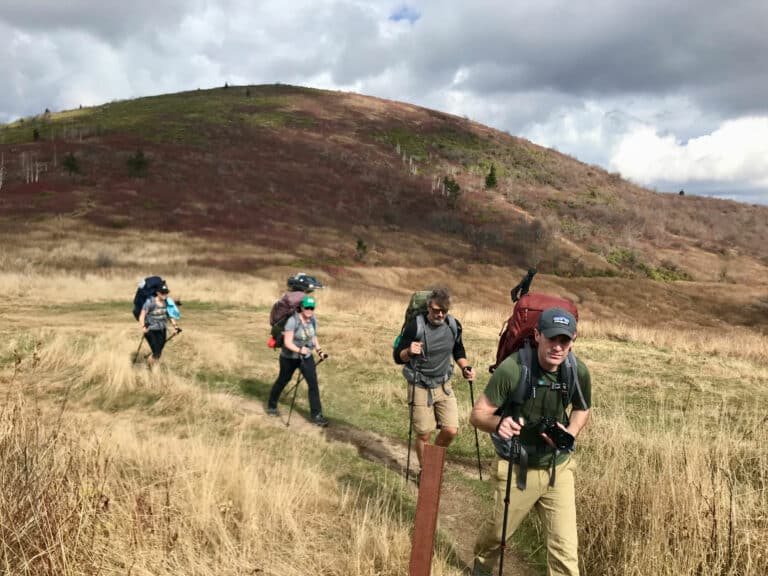Permanence. It’s the illusion that shapes our perception of the world, not in a small way, but on a fundamental level. We are hard-wired from birth to understand the world in stasis, as, at best, a set of conditions that are permanent until they’re not anymore. But it doesn’t really work that way.
Generations of Americans lived and died thinking slavery was an inevitable and fixed condition of human existence, that it was simply the way things are and would always be. In recent decades, and in America in particular, we’ve been struck by the illusion of everlasting safety, a natural disaster on the scale of the floods that killed as many as 3.7 million Chinese in 1931 seeming an utter impossibility. All of recorded human history, in fact, has arisen in a period of stability, a lull between the cataclysmic events that have repeatedly rocked the world, nearly annihilating all life on the planet, for billions of years.
It was with that less than cheery thought that I got to thinking about ghost towns. Ghost towns poke a hole in the thin curtain separating the illusion of permanence from the terrifying reality that we live in a world in flux. That’s their fascination—the glimpse into not a kitschy, ersatz past like you find in Colonial Williamsburg, or the living river spanning a preserved past and present that you find in the great cities of Europe—but the world’s true history. The knowledge that all that is or ever was or will be fades—but no, it doesn’t fade. It becomes obliterated, devoured by time and age.
Ghost towns of the west, blessed by a dry landscape and scrubby, stunted vegetation, remain at least somewhat preserved. And in their perfect preservation, butterflies under glass, they become tame and easily dismissed. They inspire 30 minutes of gawking, the word “neat!” and a shuffle back to the family car. But back on this side of the country, ghost towns have no such luxury. Cannibalized by nature, they reveal where all our attempts at permanence really end up.
So when I heard about Virginia’s one true ghost town, I knew I had to go. There are dozens of old towns in Virginia that get tossed on lists of ghost towns in the U.S., places whose evocative names—Bigler’s Mill, Ca Ira, Goose Pond Hollow—appear on yellowed maps. But most have been ground into the earth and paved over or lie under dark water where rivers have been dammed and the land flooded. There are far fewer whose gutted remains lie exposed to the elements, skeletal but defiantly there.
Of those, there is perhaps just one that satisfies both criteria for ghost towns outlined by ghost town researcher and author T. Lindsay Baker. According to Baker, to qualify as a true ghost town, a place has to not only have some extant sign of habitation, but also has to have become obsolete. A proper ghost town has to have lost its very reason for being; think abandoned gold rush settlements or, if trends continue, Flint, Michigan, in thirty years. In that sense, a ghost town is the cruel double of its former self, something less than a memory. In Virginia, the one place that arguably satisfies both requirements is Lignite.
Lignite: the name alone speaks to decay. Lignite is the shabbiest, lowest-quality coal, the product of millions of years of decay. Named for the stuff its residents hauled out of the ground in the late 1800s, the town of Lignite was once host to homes, a company store, churches and a main street theater. It was populated by miners and their sturdy wives, hacking a living out of a single seam of coal up in the mountains, at infinite remove from, say, Roanoke, the nearest city of any size but still at least a day’s journey away in the days before cars and interstates.
I set out for Lignite on a cloudy day, caught Interstate 81 and rode it down the spine of the Appalachians. I turned off at an old country highway in Botetourt County, amid rolling farmland beneath the Blue Ridge.
I drove past stone walls, trailers plopped down in clusters opposite Victorian clapboard houses with fresh, proud coats of paint; past cows browsing in fields that sat in the shadow of immense, timeworn barns that looked like they had been built of driftwood and rust; past feebly trickling streams and a wide, glass-surfaced river that sat almost motionless beneath a dense canopy of still-orange leaves. Drove up and then down a switchback mountain highway, slaloming my way just feet from a sheer drop to the forest floor far below.
The drive took me through Fincastle, a quaint and charming town that nevertheless seemed custom-built to maintain the illusion of permanence. The center of town was almost entirely comprised of buildings erected in generations long past but maintained with obvious affection by the locals.
The last stop before Lignite was Oriskany, which consisted of a post office—open noon to 2pm, Monday to Friday—the size of a minivan; a whitewashed, steepled church that had clearly been hosting potluck dinners for over a hundred years; a handful of low-slung houses puffing woodsmoke from their chimneys; and a cemetery that spilled over into a small playground and was filled with dozens of tombstones from the better part of the last century, all bearing just a handful of names: Tucker, King, Horton.
And then just past an Airstream trailer, a gleaming lunchbox of a home, I spotted a painted wooden mile marker pointing down a pitted gravel lane. One mile and I’d be in Lignite, according to the sign. I parked, got out of the car, and began to walk.
Not sure what to expect, I felt a mounting sense of disappointment as I reached a mile and had seen no sign other than the worn gravel road beneath my feet that anyone had ever been to the area. I began scanning the area for something, anything, when I noticed two decrepit foundations—of houses? Churches? The theater?
Just as I reached one of the stone foundations, the gray husk of formless cloud that had enveloped the sky all day cracked. Sunbeams fell through the dead vines and bare, grasping branches that twisted overhead. Far from bathing the paltry remains of human habitation in newfound warmth, the sunshine only heightened the vulgarity of exposing the last vestiges of humanity to the elements.
It seemed truly unbelievable that in a single lifetime, a living, breathing, praying, working town had been ground down into nothing but forest floor, right down to the now-naked cellar that may have once lain under a kitchen suffused with the smell of bread baking and the voices of children sniping at each other behind their parents’ backs, or a theater filled with the echoing footfalls of a traveling troupe of actors treading the boards in front of an audience of families, or a country store stuffed with sacks of sugar, coffee, cured hams, tobacco. In less than 200 years, this place had gone from wilderness to civilization back to wilderness without the outside world even noticing.
Then I spotted something white and unmistakably building-sized on a ridge ahead. I fell into a jog, but stopped as soon as I got close enough to actually see what I’d only glimpsed. There, between two gutted chimneys, somewhat more substantial signs of life than the foundations, was a small encampment: an RV, a camper trailer, and a tent. Only the flags twisting in the wind, dangling from a rope tied to the highest branch of a nearby tree, gave away that this was more than a camping trip, but a home, at least for a while. That this clearly wasn’t land that they owned and that of the two flags, the Confederate was hung higher than the American made me think they might not be entirely eager to talk to someone tramping up to their door and asking questions.
As I walked back to my car, I thought that a sense of permanence, illusory though it may be, might just be the one true necessity of the human experience. We adapt. We hold on to what seems permanent and constant and true for as long as possible until time or circumstance or loss or love forces us to create a new permanent for ourselves. The miners who abandoned Lignite en masse didn’t die with the town. They pulled up stakes, went to where there was work, and resumed life. And if they had children born after the death of Lignite, those children grew up understanding their own circumstances as permanent, knowing of Lignite only in stories and secondhand memories. The world is always in flux, but the illusion of permanence does more than just let us cope with change. It lets us live.








